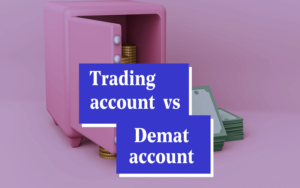ETFs vs. mutual funds: which investment vehicle is best for you?

Investing in the stock market can be a daunting task, especially for those who are new to the world of finance. There are numerous investment options available, each with its own set of advantages and disadvantages. Two popular investment vehicles that investors often consider are exchange-traded funds (ETFs) and mutual funds. While ETFs and mutual funds offer exposure to a diverse range of assets, they have significant differences that can impact an investor’s portfolio. This article will discuss the critical differences between ETFs and mutual funds in Singapore, helping investors determine the right investment vehicle.
Structure
The structure of ETFs and mutual funds is the most significant difference between the two investment vehicles. ETFs are typically structured as open-ended investment companies (OEICs) or unit investment trusts (UITs), while mutual funds are usually set up as OEICs. This structural difference has several implications for investors.
ETFs are traded on exchanges, making them more liquid than mutual funds. Investors can buy and sell ETFs throughout the trading day, while mutual funds are only changed once a day after the market closes. It provides investors with greater flexibility to react to market movements.
ETFs generally have lower management fees than mutual funds due to their passive investment strategies. Mutual funds, on the other hand, are actively managed, resulting in higher management fees. This structural difference can significantly impact an investor’s returns over the long term.
ETFs have lower minimum investment requirements than mutual funds, making it easier for investors with smaller budgets to enter the market and diversify their portfolios effectively.
ETFs have a fixed number of shares available, while mutual funds can issue an unlimited number of shares. Therefore, the price of ETFs is based on market demand and supply, while mutual funds’ value is determined by their net asset value (NAV). As a result, ETFs are more volatile than mutual funds, as their prices can fluctuate throughout the trading day.
Investment strategies
One of the critical differences between ETFs and mutual funds is their investment strategies. ETFs are passively managed, tracking a specific market index or sector. This low-cost approach aims to replicate the performance of the underlying assets, making ETFs suitable for investors who prefer long-term investments.
Mutual funds, on the other hand, are actively managed by a team of professional fund managers. These managers choose which assets to invest in, aiming to outperform the market. This active management comes at a higher cost, but it also offers the potential for higher returns. You can find a range of ETFs available at Saxo.
The difference in investment strategies also affects taxation. Since ETFs passively track an index, they have lower portfolio turnover, resulting in fewer capital gains distributions. It makes ETFs more tax-efficient than mutual funds, which have higher portfolio turnover due to active management.
Trading flexibility
ETFs and mutual funds also differ in terms of trading flexibility. As mentioned earlier, ETFs can be traded throughout the day on exchanges, allowing investors to react quickly to market movements. On the other hand, mutual funds are only bought or sold at the end of each trading day, making them less flexible for short-term traders.
ETFs offer many trading options, including limit and stop-loss orders. These features allow investors to set specific price points for buying or selling ETFs, providing greater control over their investments.
Mutual funds, on the other hand, do not offer such trading options. Investors can only buy or sell mutual fund shares at the end of the day at the NAV price, limiting their trading flexibility.
Expenses and fees
ETFs and mutual funds have different expense structures that can significantly impact an investor’s returns. ETFs usually have lower management fees, as they are passively managed. However, buying and selling ETFs on exchanges incurs trading costs, which can increase over time.
Mutual funds have higher management fees due to active management, but these fees are often all-inclusive. Investors do not incur additional trading costs when buying or selling mutual fund shares.
It’s essential to consider the expense ratio of both ETFs and mutual funds before investing. The expense ratio is an annual fee charged as a percentage of the fund’s assets under management. It includes management fees, administrative costs, and other operating expenses. The lower the expense ratio, the more cost-effective the investment vehicle is.
Transparency
Transparency is another critical difference between ETFs and mutual funds. ETFs are publicly traded, making their holdings transparent to investors. It allows investors to know what assets they are investing in and how their investments are performing.
Mutual funds, on the other hand, have a different level of transparency. Since they are traded only at the end of each day, investors may only know the assets held in their funds after the market closes. This lack of transparency can make it challenging to monitor and track investments effectively.
It’s essential to note that some mutual funds provide regular disclosures of their holdings, but these reports may not be as frequent as ETFs’ daily transparency.





